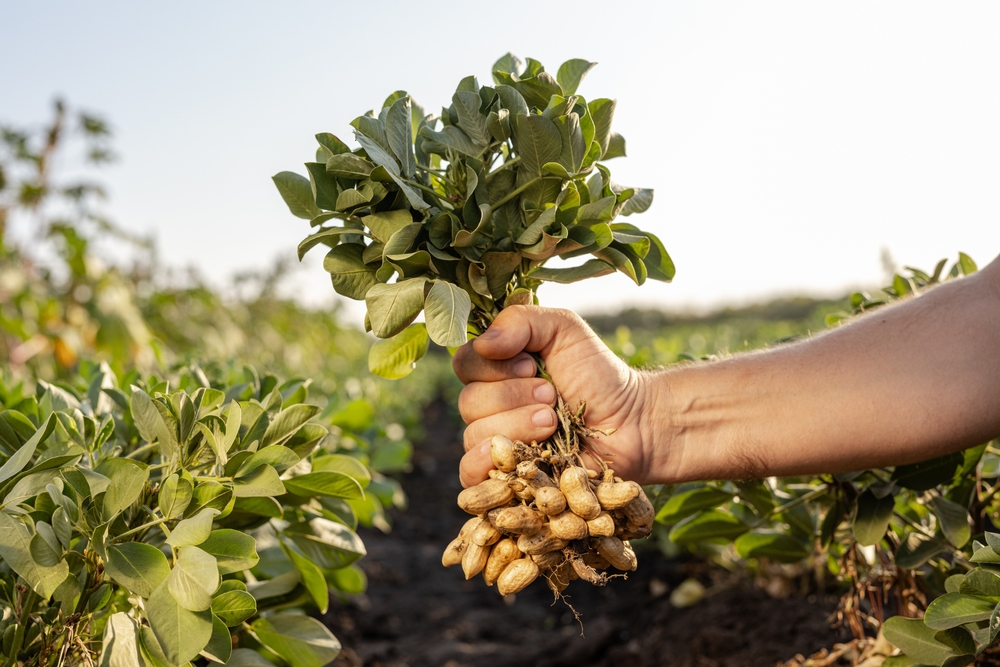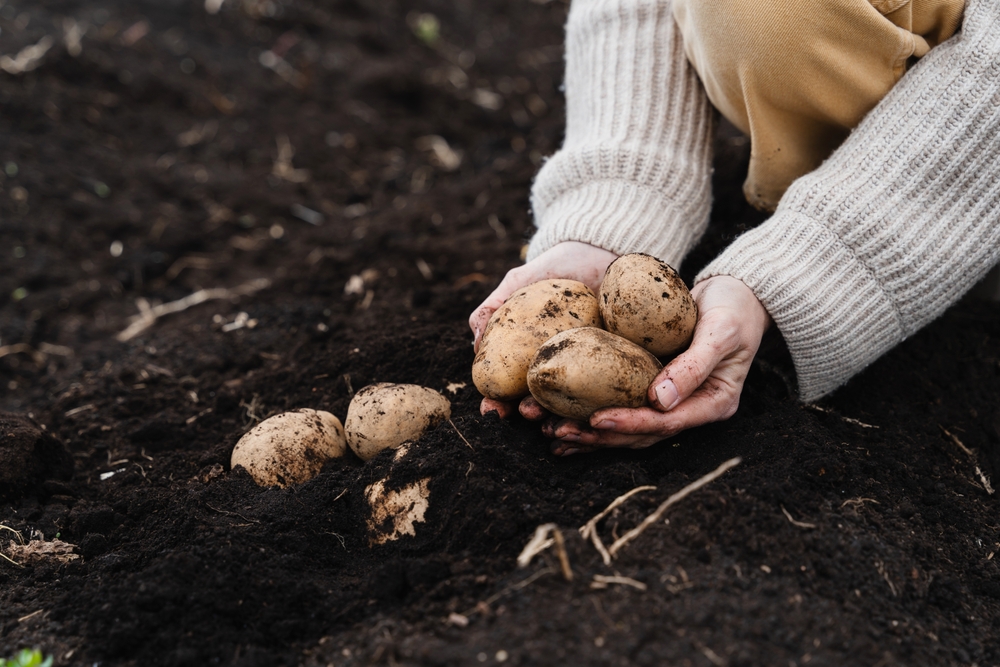
Image Source: Shutterstock.com
When the cold winds start howling and your backyard garden turns into a frozen wasteland, most people assume the fresh harvest season is over. But here’s the secret your great-grandparents knew by heart: winter doesn’t have to mean empty pantries or flavorless meals. Root crops—those humble heroes growing quietly beneath the soil—can keep your table stocked with hearty, nutritious food all winter long. With the right storage techniques, they become nature’s time capsules, holding onto flavor, texture, and nutrients long after the first frost.
So grab your burlap sacks and cellar shelves—because we’re diving into how storing root crops can turn winter into a season of plenty, not scarcity.
Root Crops: Nature’s Built-In Survival Food
Root crops are basically the underground superheroes of the food world. Carrots, beets, potatoes, turnips, parsnips, and rutabagas—all of them have one amazing thing in common: they store energy in their roots for the plant’s survival. Lucky for us, that stored energy also means long-lasting food that’s rich in vitamins and carbohydrates.
These vegetables naturally resist decay better than leafy greens or fruits, which makes them perfect candidates for long-term storage. Historically, root crops were the backbone of winter diets before refrigeration ever existed—and they’re making a comeback for good reason.
The Science of Staying Fresh
Why do root crops last so long? It’s all about their biology. These plants are designed to outlast cold weather by storing sugars and starches in their roots, which not only gives them flavor but also acts as a natural preservative. Their thick skins protect them from dehydration and bacterial invasion, making them tougher than your average produce. When stored correctly—cool, dark, and humid environments—they can remain crisp and edible for months. It’s not magic; it’s smart evolution working in our favor.
The Magic of the Root Cellar
Before electricity, people didn’t rely on fancy appliances—they relied on the earth. A root cellar, whether a basement nook or a backyard dugout, uses natural insulation to maintain consistent cool temperatures and humidity. This environment slows down respiration in root vegetables, preventing them from shriveling or sprouting. It’s simple, sustainable, and still one of the best methods available for keeping produce fresh through winter. Plus, there’s something deeply satisfying about walking into a cool cellar lined with jars and baskets of food you grew yourself—it’s like stepping into a living pantry of self-sufficiency.
Potatoes: The Cold-Weather King
No root crop has earned its crown quite like the potato. Hardy, filling, and endlessly versatile, potatoes are the cornerstone of winter survival foods. When stored between 40–50°F in a dark, well-ventilated space, they can last up to six months without losing their flavor. The trick is to keep them dry and away from onions, which release gases that cause them to sprout. A crate of potatoes tucked away in your cellar means countless comforting meals—from stews to mashed dishes—throughout the coldest months.

Image Source: Shutterstock.com
Carrots and Beets: Sweet and Sturdy Allies
Carrots and beets might seem delicate at first glance, but when stored properly, they hold their own all winter long. Trim off their leafy tops (but don’t cut into the root itself), pack them in damp sand or sawdust, and store them in a cool, humid environment. This mimics the soil they came from and keeps them crisp and sweet for months. Both are packed with nutrients that help fend off winter fatigue—carrots deliver beta-carotene for healthy eyes, while beets support circulation and energy. It’s no wonder our ancestors leaned on these colorful roots to power through the darker days.
Turnips, Rutabagas, and Parsnips: The Underrated Trio
These earthy roots don’t get the fanfare they deserve, but they’re absolute workhorses in winter storage. Turnips and rutabagas thrive in cool, damp spaces, often tasting even better after the first frost when their starches convert into sugars. Parsnips, sweet and nutty, can last for months under the right conditions and are delicious roasted, mashed, or tossed into soups. These vegetables store their strength deep within, providing slow-burning energy that keeps people going through centuries of cold winters. Think of them as the hidden gems of your cold-weather pantry—humble, reliable, and surprisingly delicious.
Beyond the Cellar: Modern Storage Solutions
Don’t have a root cellar? No problem. Modern living spaces can still mimic those traditional storage conditions with a little creativity. A cool garage, basement corner, or even an insulated storage box on a shaded balcony can do the trick. The key is controlling temperature and humidity—too warm, and they’ll sprout; too dry, and they’ll shrivel. With a few containers, some damp sand, and attention to airflow, you can create a mini “cellar” that fits any lifestyle, urban or rural.
How Stored Crops Keep Meals Creative
Having root crops on hand all winter doesn’t just extend your food supply—it keeps your kitchen exciting. Instead of relying on canned or frozen foods, you can whip up hearty soups, vibrant roasted vegetables, or even beet chips and parsnip fries. Each crop brings its own texture and sweetness, turning ordinary winter dinners into colorful feasts. Plus, using stored roots encourages creativity—how many ways can you cook a potato before getting bored? Spoiler alert: a lot. With the right recipes, your winter diet can feel as fresh as your summer harvest.
Sustainability in Every Bite
There’s also a bigger benefit to storing root crops—it’s sustainable. By storing food from your own garden or local farmers, you reduce your reliance on long-distance shipping and energy-hungry refrigeration. It’s an eco-friendly practice that saves money and cuts waste, especially since root crops are known for their minimal spoilage. You’re not just preserving food—you’re preserving tradition and reducing your environmental footprint. In a world increasingly focused on sustainability, that’s something worth digging into.
A Tradition Worth Reviving
Root cellaring isn’t some quaint relic of the past—it’s a timeless skill that deserves a modern revival. There’s something profoundly satisfying about knowing your food didn’t come from a plastic package or a refrigerated truck. Storing root crops reconnects you to the rhythms of nature and the wisdom of self-sufficiency. It’s a reminder that even in the dead of winter, life—and nourishment—persist beneath the surface. The next time you pull a carrot from the cellar in January, you’re tasting both history and resilience.
Keep Your Winter Table Alive
Winter doesn’t have to be a season of scarcity when you have a stash of well-stored root crops. These underground treasures offer nutrition, flavor, and a sense of security that money can’t buy. Whether you’re using a classic root cellar or a creative modern setup, the principle remains the same—store smart, eat fresh, and stay connected to the earth.
Now we’d love to hear from you: how do you store your root crops, and what winter recipes keep your pantry buzzing? Share your stories and tips in the comments below.
You May Also Like…
- 5 Natural Mulches That Protect Roots From Frost
- Why Shorter Days Trigger Better Root Growth
- How Fall Rainfall Impacts Soil Compaction
- 7 Evergreens That Add Color All Winter Long
- Why Garlic Loves Being Planted Before Winter
Leave a Reply